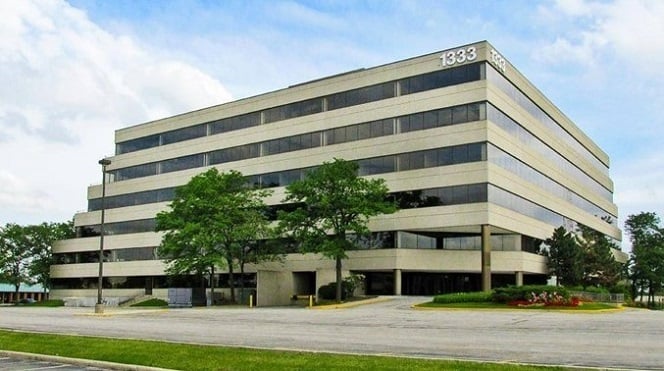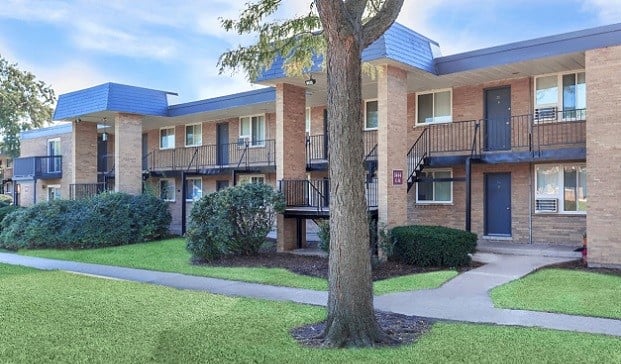
MIAMI—With hurricane season upon us, property managers should sit down with their agents and review each policy. So says Jason Wolf, a shareholder at Koch Parafinczuk Wolf Susen in Fort Lauderdale, FL.
Specifically, he says, property managers and insurance professionals should total the dollar amounts on the main policy and other policies that address windstorm, flood, storm surge and wind-driven rain. GlobeSt.com caught up with Wolf to get his take on these facets of commercial real estate insurance.
GlobeSt.com: When it comes to policies, are flood, storm surge and wind-driven rain the same?
Wolf: No. They are treated differently. The distinctions become important when a property owner or manager files a claim. (Here's how you can prepare for the next Hurricane Wilma before it hits).
When Hurricane Katrina hit and litigation ensued, a federal appeals court ruled that the flood exclusion in insurance policies applied. That cost owners billions and billions of dollars. By excluding flood damage, owners were hit with astronomical costs in reparation.
Insurers put storm surge, which is water pushed ashore by hurricane winds, into another category. Wind-driven rain isn't covered unless the property suffers damage that is already covered, which gets to two important points: proper maintenance and impeccable recordkeeping. (Suffering from insurance sticker shock? Read this.)
GlobeSt.com: Why are these coverages so important?
Wolf: An insurer can push back on a claim if there's evidence that the property wasn't kept up. For example, if wind-driven rain comes through a building opening that could have been sealed, an adjuster can argue that the damage resulted from inadequate maintenance and shouldn't be covered. Property owners that skimp on maintenance to cut costs will find that the next hurricane will cost them a lot more than the bill for sealing windows and doors.
GlobeSt.com: And the recordkeeping?
Wolf: It's critical to document improvements and renovations. Many developers and managers don't know when their roof was last replaced or repaired.
When a claim is filed, the insurance company can say that a roof was in bad shape before the storm and therefore it won't pay for a new one. Without proof, the insured will have a difficult time collecting the full amount.
Before a named storm makes TV news, property owners and managers should inventory everything, create diagrams, and take lots of video and photographs. To file an effective claim, they must be able to re-create the condition of the property before the hurricane hit.

MIAMI—With hurricane season upon us, property managers should sit down with their agents and review each policy. So says Jason Wolf, a shareholder at Koch Parafinczuk Wolf Susen in Fort Lauderdale, FL.
Specifically, he says, property managers and insurance professionals should total the dollar amounts on the main policy and other policies that address windstorm, flood, storm surge and wind-driven rain. GlobeSt.com caught up with Wolf to get his take on these facets of commercial real estate insurance.
GlobeSt.com: When it comes to policies, are flood, storm surge and wind-driven rain the same?
Wolf: No. They are treated differently. The distinctions become important when a property owner or manager files a claim. (Here's how you can prepare for the next Hurricane Wilma before it hits).
When Hurricane Katrina hit and litigation ensued, a federal appeals court ruled that the flood exclusion in insurance policies applied. That cost owners billions and billions of dollars. By excluding flood damage, owners were hit with astronomical costs in reparation.
Insurers put storm surge, which is water pushed ashore by hurricane winds, into another category. Wind-driven rain isn't covered unless the property suffers damage that is already covered, which gets to two important points: proper maintenance and impeccable recordkeeping. (Suffering from insurance sticker shock? Read this.)
GlobeSt.com: Why are these coverages so important?
Wolf: An insurer can push back on a claim if there's evidence that the property wasn't kept up. For example, if wind-driven rain comes through a building opening that could have been sealed, an adjuster can argue that the damage resulted from inadequate maintenance and shouldn't be covered. Property owners that skimp on maintenance to cut costs will find that the next hurricane will cost them a lot more than the bill for sealing windows and doors.
GlobeSt.com: And the recordkeeping?
Wolf: It's critical to document improvements and renovations. Many developers and managers don't know when their roof was last replaced or repaired.
When a claim is filed, the insurance company can say that a roof was in bad shape before the storm and therefore it won't pay for a new one. Without proof, the insured will have a difficult time collecting the full amount.
Before a named storm makes TV news, property owners and managers should inventory everything, create diagrams, and take lots of video and photographs. To file an effective claim, they must be able to re-create the condition of the property before the hurricane hit.
© Touchpoint Markets, All Rights Reserved. Request academic re-use from www.copyright.com. All other uses, submit a request to [email protected]. For more inforrmation visit Asset & Logo Licensing.






